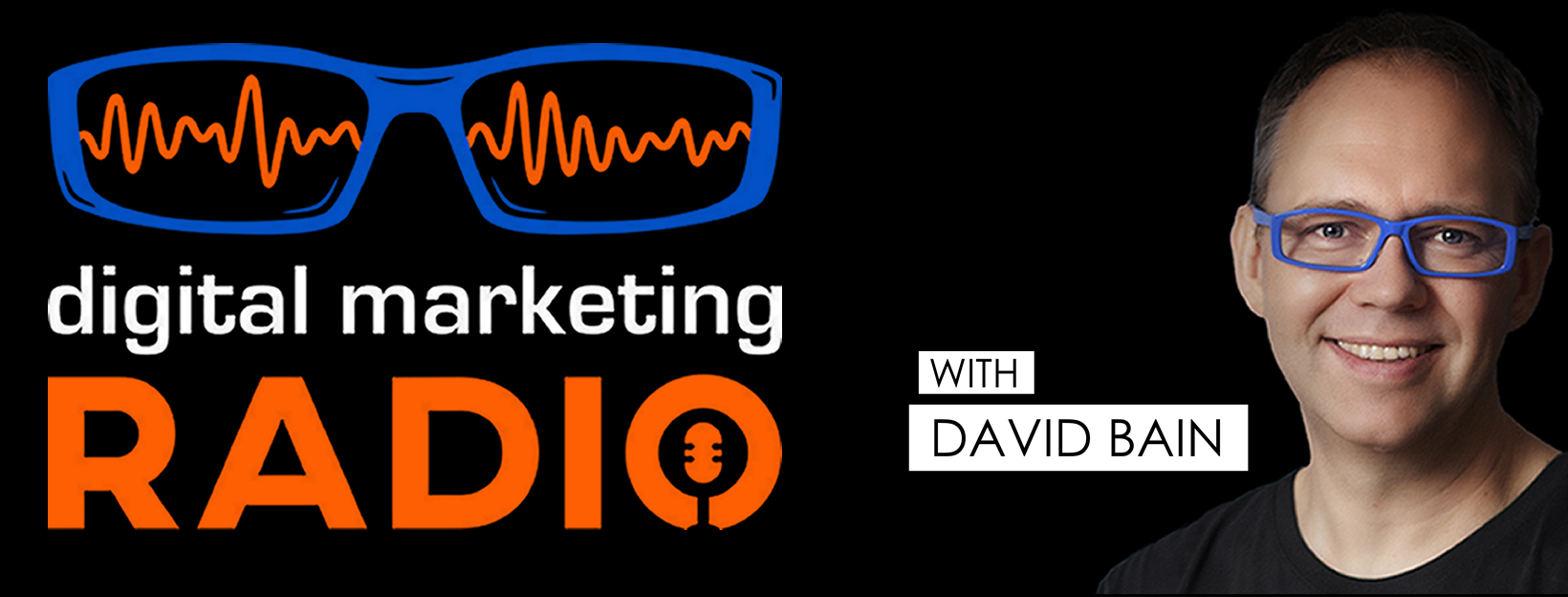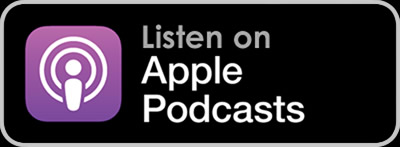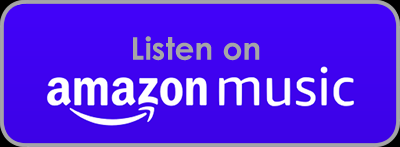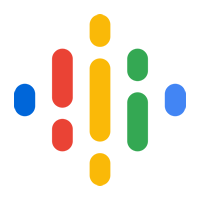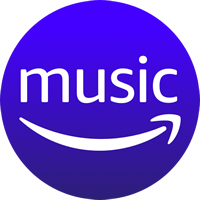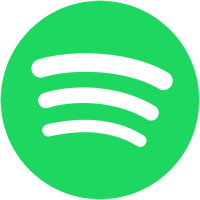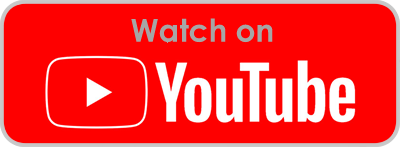How is the event industry going to change post-COVID? As a marketer should you plan to get back in the events game soon? Or are we more likely to see hybrid events in the future – a combination between virtual and physical events? If so, what does that mean for marketers?
Those are just some of the questions that I’m going to be asking my guest on Digital Marketing Radio episode 243. She’s a lady who’s as passionate about storytelling as she is about marketing and sales – and those two masterminds speak her language.
She specialises in developing virtual, hybrid and physical events – including event marketing strategy that incorporates social media, brand marketing, campaign planning, and performance tracking. She’s the Director of Event Marketing at Informa – welcome to DMR – Kathryn Frankson.
Key questions covered in this episode:
How has the traditional events industry coped over the past year?
Are we going to see full scale events as we knew them before return soon?
What’s a hybrid event – and are we more likely to see more of them?
Is it possible to mimic the face-to-face experience in a virtual environment?
What does this mean for exhibitors?
In what ways can marketers take advantage of hybrid events?
What does this mean for speakers?
How does this alter the format of events?
How do you measure the success of events?
Audio recording:
Full transcript:
David Bain 0:00
Digital Marketing Radio Episode 243, the future of events, post COVID
Bot 0:06
Digital Marketing Radio with David.
David Bain 0:11
I am David Bain. And this is Digital Marketing Radio the show for in-house agency and entrepreneurial marketers you want to stay on top of that it is tools, tactics and trends shared by today’s modern marketing masters. How is the event industry going to change post COVID? as a marketer? Should you plan to get back into the events game soon? Or are we more likely to see hybrid events in the future a combination between virtual and physical events? And if so, what does that mean for marketers? Those those are just some of the questions I’m gonna be asking my guest today on Digital Marketing Radio Episode 243. She is a lady who’s as passionate about storytelling as she is about marketing and sales. And those two masterminds speak her language. She specialises in developing virtual hybrid and physical events, including event marketing strategy that incorporates social media, brand planning, campaign planning and performance tracking. She’s the director of event marketing at informer, welcome to DMR Kathryn Frankson.
Kathryn Frankson 1:12
Thanks, David. Great to be here.
David Bain 1:13
Great to have you. On the show. Catherine, where you can find Catherine, what she does. over@informer.com. And so Catherine, how has the traditional events industry coped over the past year?
Kathryn Frankson 1:29
Well, when your entire industry shuts down, you have to change absolutely everything. So a lot of the coping, it’s been interesting. So you know, initially when COVID happened, events were pushed back, no one knew the timeline. So you were sort of dealing with, you know, how do we adjust for the physical event, then all together, events cancelled. So the shift became to virtual very, very quickly, some some more quickly than others. But that that was the direction, that’s what allowed there to be a point of everyone moving forward. And what’s interesting about that, so you had a year where virtual events scaled, and our audiences had a chance to participate in such a variety of virtual events, but also realise if they actually missed the physical version of your event or not, because they were able to go a year without it. So. So the the adjustments for for virtual was, was really where everyone lived. Initially, it was a lot of translating your actual event, what you did in a live format into virtual, we all quickly realised that that was probably too much content, too much programming. It didn’t you’re not on site, you’re not immersed in an event audiences are at home in this this new world of distraction. And when you only have your laptop in front of you, and they can look at a phone or have four other browsers open, you really quickly have to step into our job is also to be more entertaining, to create better engagement to find ways to incorporate our partners in a different way. So it all started in that virtual framework. And then the iterations came from there, as we learned,
David Bain 3:18
so are we going to see full scale events return as we knew them pre COVID, fairly soon,
Kathryn Frankson 3:24
they will return? My hope is that they aren’t exactly how we how we built them before. I think, in my opinion, the big upside in the event landscape from COVID is that everyone had although very painful, and you know, your loss of revenue and loss of these experiences that, you know, you loved producing an audience loved. But it really everyone has to reinvent. So So physical events will will come back, we’re seeing events, we’ve had a few trade already. It depends on what vertical you’re in, what region your event would take place in. And then also really the the brand health, can you Is there a compelling reason to hold your event but so there’s been a few but we’re certainly planning for the fourth quarter, and certainly for 2022, but everyone is taking a look at at your events, even if it was what you consider a traditional, you know, on the b2b side of things conference and trade show, you have to look at how do we change our value prop because those same, just the same problems that you’re solving for your audiences might not be there and the same competitive advantage that you had for your event might not be there if they’ve realised, okay, well, I can get a level of the education that I was receiving online, then you have to think about what are you offering for you know, more immersive experiences for networking education that isn’t it Just speakers talking to audiences, maybe they can create something together. So because that that feeds into the marketing side, you have to find a new story to tell. Because it’s it’s it’s harder to get, you know, audiences to book travel, justify the budget, everyone’s in these new patterns of working and living. So it starts with defining what that new product is. And then and then you start to work backwards from there with your messaging.
David Bain 5:25
So you alluded to the fact that virtual events need to be shorter than conventional in person events, because people have so many different distractions. So is there an ideal length for virtual events, and what kind of format tends to work better for a virtual event,
Kathryn Frankson 5:43
they’re getting shorter and shorter. So initially, we thought we were very, like, ooh, we’re moving to 45 minutes sessions or 30 sessions, but it can, it can depend. So we still have some events that we run virtual events that are, you know, sessions that are in an hour, they’re half day events, some are even full day. And then you have others where the they’re these short snippets, it’s it’s 45 minute increments of content. But it’s all it’s all around how you programme it. So if you are going to do something that’s a half day, think about it in in blocks of time, okay, because we have some events where you’ve got continuing education credits attached to it, and there is a little bit more of a format within that, but then we think, how do we, how do we open it in an attention getting way? How do we give the right amount of breaks? How do we build in some, you know, some entertainment into that, so it just doesn’t feel exhaustive and just very, you know, static in terms of how you’re consuming it, but but some are 30 minutes and up. So it all it can, it can be a pretty big range.
David Bain 6:47
So can you really realistically then deliver a hybrid event that works for both online and in person, attendees at the same time,
Kathryn Frankson 6:57
I think sell that’s the new, that’s the new frontier of what’s being being developed is and it’ll be it’s interesting, both from a product event design engineering standpoint, and then also how you choose to market it. Because, you know, you do have to build those two experiences. And there’s a lot of talk now of Oh, well don’t don’t just stream content that’s not truly hybrid. And I do think everyone should be freed up to design for their specific audience that that should be one of the big takeaways is that, for events to still be relevant, those who are closest to their audiences and are able to iterate more than we were before you kind of had your event format, and it worked. And you sort of picked that up each year. But yeah, for hybrid you’re designing for, you’ve got your physical in person experience. And then you’ve got this digital component, which which does feel very exciting. Because, you know, depending on the size and scale of your event, I mean, ultimately, even if you’re a large event, that’s a small portion of your, your total audience of your database, that’s probably coming to your event annually. And so it does, it does create more opportunity. But then the question is, what’s that digital experience, I think everyone kind of understands the we, we’ve been to events, we know the physical experience. So it’s trying to find out those points where the audience’s can join up. And then from the marketing standpoint, you have to back up and say, who do we how do we path everyone and make each of these options really clear? And what what from our data sets? are we are we are we using? So we know we’re gonna message our past alumni potentially differently than international audiences. So so it’s it’s interesting to think about almost having two audience sets for both your event and and your campaigns themselves.
David Bain 8:57
So you touched on letting the audience’s link up? Is that in the form of just social media? Or would you actually try and bring in the virtual audience to maybe some kind of discussion panel, so they’re actually actively involved with the same audience, other physical event,
Kathryn Frankson 9:13
so both but ideally, you would have a platform that would allow your audience virtually to interact with your audience on site? Because that’s also where it gets, it gets a bit more exciting, where it doesn’t feel like it’s as as separate for for both of your event audiences?
David Bain 9:30
Okay. Okay. Got you. Okay, so I have a platform. So some kind of maybe proprietary software that the the event is being broadcast live on that the virtual audience is obviously on, but I guess giving the live audience access to the same platform at the same time.
Kathryn Frankson 9:50
Yeah, well, and it’s interesting. See, there’s a couple of different formats in play. You have some where event designers are actually your you’ve got your physical in person, audience You’ve got a stage a stage set, think you know, a keynote, you might even have, you know, a screen and LED screen where you’re actually bringing in your audience virtually, you know, maybe you’re doing a subset of VIPs, they’re coming in. So you’re actually getting a little bit of FaceTime there. And then on that platform or on your mobile app experience, you can also do chat, you can do polling, you can you can kind of let those two audiences, you know, talk about what they’re seeing and experiencing and communicate about that, in real time.
David Bain 10:33
Are there some elements of an in person experience that you just shouldn’t attempt to replicate in a virtual forum and thinking things like, after event drinks that perhaps work best? On a face to face basis?
Kathryn Frankson 10:48
Yes, I don’t think anyone is eager to zoom into the, you know, hotel, hotel bar, necessarily. But yeah, I think you do have to pick and choose, because you also want to be cognizant of why why someone’s joining virtually a different experience that someone is going to get when they’re more immersed on site. And plan for that, because you do have to be realistic, both about what you can, what you can actually deliver what the tech is going to allow you to do and and and what’s going to feel most organic for your audience. And if those networking components feel like they should be a little bit separate, and you’re doing something specifically for, you know, around table or something in the virtual space for that audience that just is going to feel a little bit more organic, maybe it is, you know, a little bit shorter, your programming is a little bit more condensed than that’s you want to be able to make those decisions.
David Bain 11:41
So what does this mean for exhibitors, because part of traditional events is you have an opportunity to sell space to exhibitors, and attendees have an opportunity to attend these holes. Is that something that can be replicated online as well? Or do you have to actually offer something entirely different to exhibitors online? Is there a different kind of business proposition that works better online?
Kathryn Frankson 12:02
I think there is a different proposition that works better online. That was one of the areas that we’ve all been solving for, and I would say is still a work in progress education piece, we’ve figured that out. Engagement, how do we get audiences to feel really connected and connect a little bit before and after we’re getting a lot better at that. And you know, translating an exhibitor experience, when we initially did that early on it, it was a little flat in many ways. I mean, it was sort of web a web page where you know, audiences could go in and then sometimes a video would, would auto generate. And that also wasn’t it was, it wasn’t always the best, the best experience overall, we got a little bit better at it, because some of it was coaching exhibitors on the experiences, finding ways for them to not have to sit in these virtual booths all day, so that they were only coming during high traffic times and also coaching them around the the idea of an attendee just coming in and being pitched is not really where they want to be met. But I do think what we found that works best virtually is what as much as you can bring your partners in at a sponsorship level, and design something that’s a little bit more embedded into the event itself, they see much better results. So especially if you’re doing if you’re doing a virtual event series, which can be a great way to offer up more more sponsorship opportunities, but also more custom content for your audience. It can be great to have them involved, you know, q&a with the with the keynote, they’re actually you know, presenting content themselves, maybe they’re they’re doing a demo, but the more that you can bring them in a little less church and state. Virtually, we found that that works really well. So
David Bain 13:47
in essence, that means more sponsored speaking opportunities, so that the brand can Yeah,
Kathryn Frankson 13:53
it can. And especially and that’s where if you’re doing if you have the opportunity to do a virtual a pre or post a virtual lead up up series where it’s, you know, it’s it’s ama’s, or it’s presenting, it’s an ongoing, you know, presenting content, probably, you know, to your different ideal customer profiles or personas, it can be a much more organic way to bring to bring sponsors in. And it performs really well, especially if you align them with the right speakers. I think traditionally we’ve thought of sponsors will we’ll give them their logo coverage. They’re sort of underwriting the event. But we don’t want to you know, we want to make it clear that there this is where the sponsors live. And this is where our pure content, our speakers, our keynotes. And I think we’ve also seen a lot more joining up with sponsors and partners that we don’t have to keep them we don’t have to keep them so separate if they’ve got a really strong point of view. And we can really put them into the content programming it can be valuable for them but also for for audiences because we do We did get that as a point of feedback, actually, we have this exhibitor experience, which was still developing. And they were saying we want a little more engagement, we want more leads. But then inversely, we had audiences saying, we do want to, we want to know what the new products are on our space. We want to we want to find more, more tech, it’s great to get this education and to get these insights. But we also kind of want to know what’s, what’s new and different. And so that that was also one of the prompts to say, Oh, well, maybe we can rethink this.
David Bain 15:28
So what does this hybrid format mean for the skills that you’re looking for in a speaker? And is there a different skill set required? And is the structure of a presentation that you’re looking for a speaker slightly different? Because it has to work well, virtually as well as in person?
Kathryn Frankson 15:45
Yes, you’re going well, and I think that I think speakers have come along a long way. On the tech side, many of them have been doing virtual events speaking this year. But the onus also falls on if you have someone who’s really talented, they’re bright, they’ve got a specialty, we do events and in a host of different markets. And so some are less on the professional speaking circuit, per se, but they’re incredible subject matter experts. So I also think a big portion of it falls on show organisers and event planners and producers to help prepare them. So if you set you might, you’re gonna have your, your keynote or a subset of your speakers, you say, Yep, this is the format, we want to make sure you’re polished, we want to do tech checks. This is how this is gonna work comfort level, especially with your MC but other other speakers, it’s it’s a new format to everyone. So a lot of it’s also just going to be like taking the time to walk through everything really clearly, and making sure that you’re you’re giving your speakers the chance to feel to feel comfortable to understand how the format is going to work.
David Bain 16:51
So you touched upon leads is a measurement of success for sponsors and exhibitors, what are maybe one or two ways that you would advise sponsors to actually try to maximise the number of leads that are generated? Are there different offers or incentives or competitions that tend to be more effective,
Kathryn Frankson 17:10
we did a lot of coaching in this area for our for our partners. So we found that I mean, anytime they can offer up content that our audience is really interested in, it performed really well, because it’s you have to think of it as a value exchange. And that was part of that conversation is, of course, we get that you want someone to come in and you want to, you know, introduce yourself and position your product. But if you can be the thought leader, you’ve got your product, but if they can sort of zoom up a level and say, Yes, we produce x, this is the service that we offer. But we’re a thought leader in this space, here’s our you know, pricing guide, here’s our here’s our white paper, we offer free free consulting, if they’re bringing in a speaker of their own. We have seen, you know, some of the some of the prize stuff works too, if they’re offering, you know, we’ve had some offer AirPods and some gifts, but I think if you can find a little bit more of it’s a good incentive. And it works. And it can be a fun, you know, conversation starter, but anyone that’s bringing a little bit of their own content to the table and kind of putting in that legwork. They found that it started more conversations and turned into more valuable leads for them. So
David Bain 18:27
are you talking about content in exchange for opting in for the lead or free content at the event with a view to actually them engaging with the brand and then coming towards you naturally by themselves?
Kathryn Frankson 18:39
Yeah, free content. So he so we’re going to be partnering at this event. And here’s, here’s what we have to offer. Here’s what we have to say it’s not just coming from the place of we want to show you our wares, we want to show you our products, it’s here’s the reason to visit in this scenario of having a virtual booth. It’s here’s the reason to come to our booth. And then that means they’re doing a little bit of their own marketing, and we can partner with them on that. But it just gives our audiences a reason to, to make that opt in a little bit easier. Because then they’re interested in in what they can get. They’re interested in what they can talk about. They’re interested in what in what that partner is actually going to share.
David Bain 19:18
Yeah, brilliant stuff. Oh, by the value exchange, just making the consumer feel that they’re actually it’s an equal relationship and they’re not just giving away their details. Yeah. What if was nothing? Okay. Well, let’s segue to part two of our discussion. It’s now time for Katherine’s thoughts on the state of digital marketing today. So starting
off with SECRET SOFTWARE, so Katherine
share our lesser-known martech tool that’s bringing you a lot of value at the moment and why that tool is important for you.
Kathryn Frankson 19:41
One of my favourite tools now And speaking of content is turtle. So we t u RTL Co. We switched over about a year ago all of our content from PDFs into these interactive well designed thought leadership pieces. What’s very cool about it is that one, you can create these actual interactive templates for your if you’ve, you know, a bigger sales and marketing team, give them these different versions, they just fill out a form for their client, it auto populates everything. So they’re able to send out custom sponsors sponsorship packages at scale. On the marketing side, as well, you can actually see where where your audience is spending spending their time. So you can see which chapters in which page and how much they’re sharing. And you can do direct to social embed links on there, and it tracks all of that, which is actually really interesting, because then we can look at that and go, we did this whole white paper, this subject was the most important, and then let’s turn that into its own its own piece. And if you’re using content as lead gen, what I also like about it is you can put your gate anywhere in the piece. So instead of that just having to live on your on your landing page and write a little blurb and they have to fill out the form, they can actually kind of go go into this piece realise that it’s it’s actually valuable, what you know, videos are embedded pull quotes come out, and then and then if you if you do want to get it, you can just bear that a little bit deeper. So they’re more enticed to fill that out.
David Bain 21:18
I like that. Because I think there are too many pieces of content now that asked for the lead too quickly, before the consumers had the opportunity to just decide if it’s the right. I don’t know if it’s good or not. Yeah, exactly. Absolutely. Okay, let’s, let’s turtle co they describe themselves as Enterprise Content automation. But moving on, from something you currently use to something that you’re going to use that as NEXT ON THE LIST. So what’s one marketing activity or tool that you haven’t tried yet, but you want to test him?
Kathryn Frankson 21:43
Okay, I’ve I’ve two so so we do a lot of sales enablement, you know, lead meeting generation for our sales team tracking everything to revenue. So that’s one of our big, our big areas of focus. And I think as marketers, we figured out how to generate leads, and we know there’s sort of the sales marketing lead battle. But Gong is a tool that is in his in my sites, which is revenue optimization you can listen to it sort of tracks, you know, sales calls, messaging so that you’re getting those insights back, like what are customers saying? What’s, what’s the feedback, because currently, the visibility that we have, as you as you look at your your pipeline analytics and saw in Salesforce, or you talk to your sales teams, and it can feel more anecdotal than just rooted in data and especially for them to if you have a large Salesforce, then you can run this across all of your teams. So that’s the first one the and the other would be a tool that I’ve been following is called sales whale. And that’s actually for, it’s an AI enablement tool that helps any of your your leads that are just sitting there mid funnel, and it actually it works them so your sales teams don’t have to. So that’s, it feels like that it becomes a big revenue opportunity left because we put so much focus on will generate great content, or we’ll run really interesting events, we want to create leads that create new opportunities. And then it feels like it sort of goes into the abyss and sales teams understandably are going to work key accounts and icps. And so I think just using those two tools, and really seeing that if we harness the full potential of everything that we’re we’re putting across the fence and seeing what that revenue output would be. I think that would be really exciting.
David Bain 23:35
Great. Tanya fuks on Facebook is out on LinkedIn. Sorry, is saying, ooh, did a quick Google turtle looks interesting. It certainly doesn’t eat turtle.co all the recommendations and interesting so it’s gong.io sales world.com as well as sales all stop Marketing Leads from slipping through the cracks, certainly with B2B leads slipping through the cracks can be very costly indeed. And anything that will stop that will is absolutely superb. Okay, well, let us move on to this or that round. So this is the quick response rains. 10 quick questions, Just 2 rules here. Try not to think about the answer too much. And you’d only like to say the word both on one occasion, so use it wisely. Are you ready?
Kathryn Frankson 24:19
I am ready.
David Bain 24:21
Tick Tock or Twitter, Twitter, Facebook or LinkedIn,
Kathryn Frankson 24:26
LinkedIn,
David Bain 24:27
YouTube or podcast,
Kathryn Frankson 24:30
podcast
David Bain 24:31
traffic or leads. Both paid search or SEO
Kathryn Frankson 24:39
paid search
David Bain 24:41
ads or influencers. ads, Google ads or Facebook ads,
Kathryn Frankson 24:50
Facebook ads,
David Bain 24:51
email marketing or chat marketing,
Kathryn Frankson 24:54
email marketing,
David Bain 24:56
more tech stack or all in one platform. Through
Kathryn Frankson 25:01
Mar tech stack,
David Bain 25:02
one to one or scale.
Kathryn Frankson 25:06
I wish I hadn’t used my both. One to one.
David Bain 25:12
I was gonna say that you use your booth relatively early and traffic or leads you picked both for that. What why was that why were both important.
Kathryn Frankson 25:22
But, you know, ultimately for us you want everything you use your revenue is your North Star, you know, so but you have to work backwards from that. And I think too, when we we’ve been actually doing a lot of analysis of the good old marketing funnel, it does feel like you need you need both, you need to make sure that you’re driving the right sources and volume of of traffic and targeting in the right ways so that you generate the volume of leads that you that you do want.
David Bain 25:53
Yeah, it’s a it’s a challenge to to focus on the one thing and certainly multiple things metrics, different metrics are important in business. Let’s move on to the $10,000 question. If I was to give you $10,000, and you had to spend it over the next few days in a single thing to grow your business, what would you spend it on? And how would you measure success.
Kathryn Frankson 26:14
I this is so exciting. This is like a dream, like just give me a big wad of money. Um, I wouldn’t leave a lot of content from our, you know, conferences, virtual conferences that we produce, I would hire a great video editor to do some really strong video ad content. And I would run a series of paid ad campaigns across LinkedIn and Facebook so that I could actually do a test within both within both platforms we within the budgeting for for events, you tend to not do, you know, heavy, high scale investments across a multitude of platforms, we’ve sort of had to pick and choose. So I’d be really interested to see if we had a great great video real a couple of different edits of it that we could do for an initial ad treatment. Or retargeting follow up, if it felt like the creative was exactly right and compelling. And we put some real dollars behind it. Would we see higher conversions for an upcoming event that we’re remarketing? So
David Bain 27:25
if you’re doing video ads, and you are targeting a new audience or audience that hadn’t actually engaged with you before? Would you try to drive them towards a call to action immediately? Or would you warm them up by getting them to watch the video then perhaps retargeting with a firmer call to action? If they watch all of the initial video?
Kathryn Frankson 27:44
Yes, I would do a first campaign where it’s warming them up with the with the video, you know, enticing copy knowing that, you know, they’re gonna watch it hopefully in feed, maybe do a little bit of their own research. And then through retargeting campaign, second message leaning a little bit more into less just the excitement of the event and more. Why? What’s that? You know, what’s the value that it’s offering? I think that the conversion points with virtual become a little bit easier. So I think you can make that right hook a little bit sooner, I would still do it on the second touch with, you know, in real life events that I think it takes a little bit more communication, but I think it’d be very interesting to see. Okay, we nailed the video. Second, you know, second call to action is really specific, really, really pithy, great offer, we’ve leveraged, you know, a big attention getting keynote that we’ve used before. So yeah, so I’ve structured as as a follow up campaign.
David Bain 28:45
Great, great. And it’s funny when you say, someone gives me a big wad of money. And I was trying to think of a figure 10 $10,000 I picked that would be useful for enterprises, but also small businesses at the same time, because obviously, $10,000 isn’t necessarily a lot of money to a massive owned enterprise. But I guess if you’re strategic about it, and you had to demonstrate results from it, it’s still a reasonable amount of money.
Kathryn Frankson 29:11
Yes, in my mind, I’m like, Okay, if we have to spend it in two days and show return, put it out, put an added fun $10,000 in the budget. But yeah, it’d be a fun one to play with.
David Bain 29:22
Well, to finish off, let’s focus on someone else who deserves it. So that is a MAGICAL MARKETER. So who’s an up-and coming marketer that you’d like to give a shout out to? What can we learn from them and where can we find them?
Kathryn Frankson 29:33
Alright, my MAGICAL MARKETER is a woman named Deborah Carver. And she is incredibly bright. She started her own company called the content technologist. So it’s content, dash content, hyphen, technologist calm, her background is in. She was a journalist, then moved into SEO and paid and bye bye Going into all the different specific areas of marketing, she realised that the role of technology and your tech stack in terms of how it actually influences your, your audiences and your data capture. And she’s just a really bright mind and futurist and I think it’s great that she started her own company, and it’s focused on actually having real conversations with, with people in the industry about what what technology are using, she’s agnostic, so it’s, she can actually say, Is it is it working or not, and then make the real recommendations that that turn into campaigns that I think deliver, probably, you know, more significant results. But yeah, she’s, she’s fantastic.
David Bain 30:41
Great. She signs it as well. And I love this question because you get to meet different magical marketers that perhaps people haven’t actually heard of before. And and of course, you were recommended as a MAGICAL MARKETER in a previous episode as well.
Kathryn Frankson 30:52
So great.
David Bain 30:54
So here we go. This was Episode 243 of Digital Marketing Radio where Catherine frankston from informer shared some great tips about how online events generally have to be a little bit shorter and more succinct. Don’t do your lengthy presentations online to keep people engaged because people have four screens open at the same time and also when you’re exhibiting or sponsoring offer value and content before you generate leads as well try and engage with that person before you ask them to marry you. shared a SECRET SOFTWARE was turtle turtle dot SEO, Enterprise Content automation software NEXT ON THE LIST was gong.io and sales well.com and your mark MAGICAL MARKETER A Katherine was Debra Carver content hyphen technologies.com. Every everything Catherine mentioned there will be in the show notes at Digital Marketing radio.com. And of course in the description on the YouTube channel after we’ve finished broadcasting live. Just go to youtube.com slash Digital Marketing Radio Catherine, what’s the best social platform for someone to follow you and to say hi.
Kathryn Frankson 32:06
Find me on LinkedIn at Catherine frankston.
David Bain 32:08
Super. Okay, well, thanks so much for coming on. I have been your host David Bain. You can also find me producing podcasts for B2B brands over at Casting cred.com. Please remember, wherever you’re tuning in, feedback is fantabulous until we meet again Stay Hungry stay foolish and stay subscribed. Aloha
Bot 32:29
radio.com
Digital Marketing Radio
Digital Marketing Radio, Digital Marketing Radio, Digital Marketing Radio

